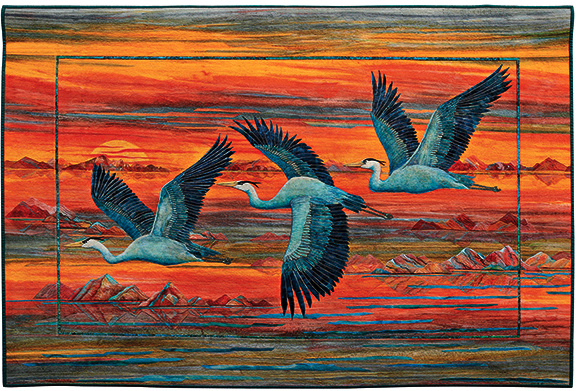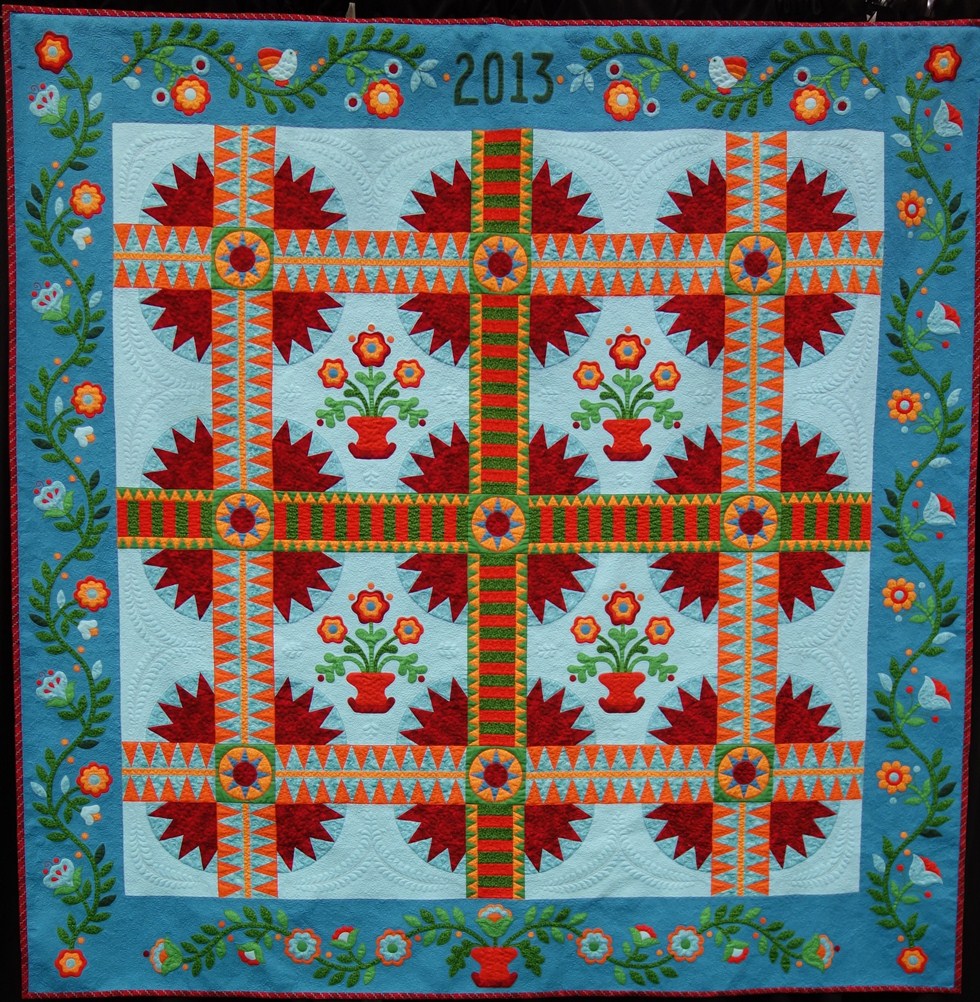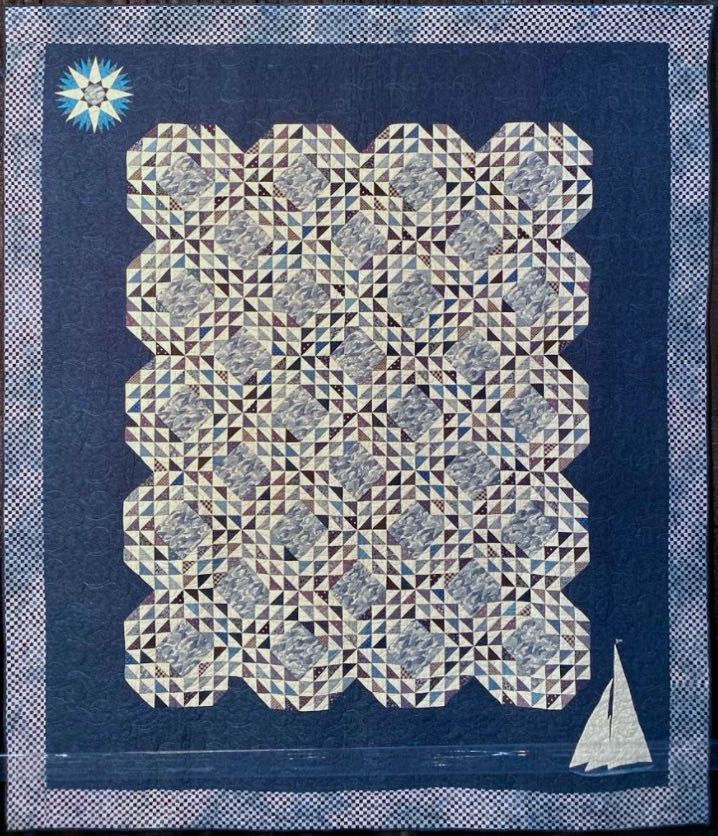 7
7

We now begin our transition from Elements of Design (Lessons 1-28) to Principles of Design. Principles of Design includes balance, contrast, movement, rhythm, emphasis, pattern/repetition, as well as unity/variety.
Let's use the example of an upcoming celebration that requires a spectacular dessert, and you want to show off your baking skills. The cake you have selected is an Italian Lemon Olive Oil Cake with Berries and Mascarpone. Think of the Elements as the ingredients you will need (i.e. flour, olive oil, eggs, mascarpone, lemon curd) to make this decadent delight. This is no ordinary mix and dump cake, but one that requires you to prepare a number of items before actual assembly (i.e. making blueberry sauce, the lemon curd and mascarpone filling).
Think of the Principles as the instructions you will follow so that the resulting cake has everything your guests will find tasty and very memorable (i.e. eye appeal, moist texture, and interesting flavor combinations). These same principle holds true for your quilt work. You, as the designer, should be striving to create a piece that holds the viewers interest by incorporating all, if not most, of the elements.
Let's begin with Balance, which is a visual arrangement of elements (color, texture, space, etc.) to create a sense of stability and calm. As in the example above, balance can be horizontal, vertical, symmetrical, asymmetrical, and radial. Examples of balance in the quilts below include:
Symmetrical
This formal arrangement creates a sense of calm and stability. There is a structured order and no one element is dominating.


Baltimore Squared by Sue Garman (Show 304, Show 503). [Image by TheQuiltShow.com]. Atmospheric Perspective by Joen Wolfrom (Show 103, Show 2101). [Image courtesy of Joen Wolfrom].
Asymmetrical
The Asymmetrical arrangement is considered informal and requires that elements have equal visual weight. While it may appear easy, it requires the artist pay close attention so that some elements don't look as though they could fall off the quilt. In Maria's Tree the little girl is balanced by the sturdy and solid looking bench, as well as the fragments of letters on the turquoise wall.
The two roses near the bottom of Five Roses are much larger and visually help to weigh down the bouquet.

Maria's Tree by Linda Anderson. (Image Road2CA).

Five Roses by Marilyn Farquhar. (Image AQS)
Vertical
Vertical designs create a sense of strength, power, dignity, grandeur, and authority.


Unfurling by Frieda Anderson (Show 705) [Image APQ]. Northern Obsession by Christine Perrigo. (Image QuiltCon)

La Vie En Rose by Mie Yamada and Seven Amigas. (Image by AQS)
Horizontal
Horizontal designs expresse a sense of calm, relaxation, balance, stability, and constancy.

Flight by Joanne Baeth. (Image by AQS)

Morning Rain by Sarah Entsminger. (Image by AQS)
Horizontal & Vertical Combined
The comibination of horizontal and vertical designs also express a sense of calm and stablity.


Handloomed by Tara Glastonbury. (Image by QuiltCon). Pole Dance by Claire Victor. (Image by AQS)
Radial
Radial designs lead your eyes around the quilt, from the center out or from the outside in.

Round the Garden by Helen Anderson. Pattern designed by Wendy Williams. (Image by TheQuiltShow.com)

Circular Copper Enamel Ammonite by Kim Lacy (Show 2606). [Image by AQS]
Award winning quilt artist Susan K. Cleveland (Show 109, Show 1001, Show 2308, and Show 2510) shares her approach to balance when it comes to capturing a viewer's interest in a quilt.

Balance
by Susan K. Cleveland | www.PiecesBeWithYou.com
(All images courtesy of Susan K. Cleveland unless otherwise noted)
I might approach design a bit differently than others since my degree is not in art or design. I started with very little confidence and talent, but a great deal of passion. In grade school and high school, my grades in art classes were based on my enthusiasm and effort and I was fortunate that my little art ego wasn't squashed! My design knowledge has developed as my confidence in quilting has grown.

I like certain elements of my quilts to be noticed from a distance and other elements to be discovered from up close. As I design, I start with major elements (stars or flowers) and place them so that they are distributed somewhat evenly. I don't want one part of the quilt to be visually heavier than another. If a quilt has rows of blocks, I distribute color so the zinger(s) are sprinkled throughout the quilt … but not too evenly spaced. Elements do not need to be perfectly spaced or symmetrical to have balance. It’s all about appealing to the eye. Placing attention-getting pieces diagonally from one another adds movement to a design and causes the eye to travel. After major elements are in place, I scatter details that will only be noticed from up close.
I think it's wise to design with your talent and preferences in mind. Background quilting is my nemesis so I design with little background space. I’m particularly fond of borders, so I plan to have multiple. Mixing appliqué and piecing makes for an interesting design balance of curves and linear elements. Maybe that's why pieced blocks surrounded by curvy appliqué appeals to so many!

I like a balance of wacky and "buttoned up", so often if the center of my quilt is wackadoodle, I design a geometric border of stripes and/or triangles. The reverse is also true.

As my design sense grows, I'm finding I really love adding surprises after I think the base of my design is set. These surprises have helped balance areas where a little something is needed and have added a tremendous.




.jpg)







































.jpg)


